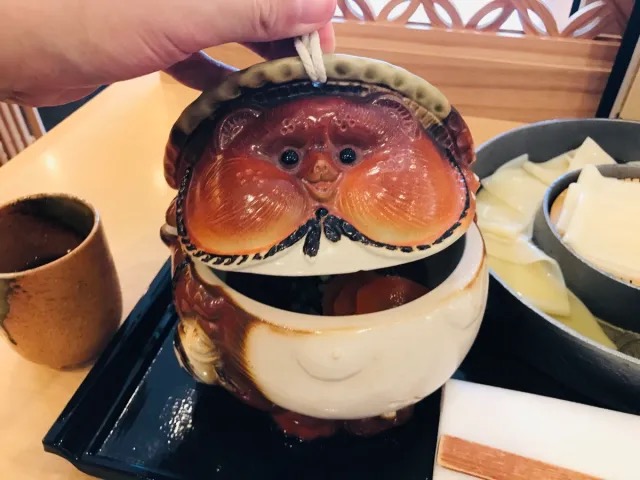
10,000 hours of work went into reviving this dish, and the results were definitely worth it.
Our Gunma-based reporter Takamichi Furusawa was looking for somewhere to eat in Gunma’s Tatebayashi City the other day when he heard about a dish called Antarctic Curry Udon.
That sounded like exactly the kind of dish he needed on this hot summer’s day, when the temperature was hitting 38 degrees Celsius (100 degrees Fahrenheit), so he immediately headed out to the restaurant that was serving it.
The restaurant is part of a well known chain in Japan called Hanayama Udon, which has a history that stems back 129 years, and this location in Tatebayashi is the main branch.
This particular building has the atmosphere of a luxurious merchant house from the Meiji and Taisho eras (1868-1926), and when Takamichi arrived 30 minutes after the opening time, the restaurant was already full, with a line of people waiting outside. The long bench under the eaves suggested that this restaurant was very popular, but thankfully the turnover time wasn’t too long, so Takamichi was able to get in after around 10 minutes.
The interior of the store was beautifully designed, with the warmth of the wood exuding a sense of luxury and adding calmness to the space. Takamichi appreciated the fact that there were counter seats in addition to table seats, making it a good place for solo diners like himself.
After taking a seat and flipping through the menu, Takamichi finally found what he was looking for — the Antarctic Curry, which was listed as “Marugoto Tamanegi no Nankyuu Curry” (“Whole Onion Antarctic Curry“. The curry (marked in red below) can be ordered with either “tsukemen” (cold dipping noodles) or “kake” (hot noodles in broth). Masanuki had been recommended to order the tsukemen, seeing as that’s the way former Japanese Antarctic expedition members had eaten it, so that’s what he ordered.
You see, this meal gets its name not from any likeness to the frigid temperatures of the Antarctic but from the Japanese Antarctic expeditions that took place during the Showa era (1926-1989).
In the mid-1950s, when Japanese Antarctic research began, expedition members chose to take Hanayama Udon noodles with them for their long trips abroad, and at base camp, they would use the noodles to make udon curry.
The craftsmen at Hanayama Udon were keen to keep this culinary tradition alive in Japan, so they spent over 10,000 hours working on reviving the dish until they were able to faithfully recreate it, true to the original.
▼ A taste of history, all for 1,400 yen (US$9.58).
It took less than 10 minutes for Takamichi’s meal to arrive, and the first thing he noticed about it was the gorgeously rotund tanuki raccoon dog that was sitting on his tray.
The smiling animal brought a smile to Masanuki’s face, and when he ceremoniously raised its head, his smile grew wider as there was a large mound of curry sauce inside the clay container. The delicious scent of curry wafted up to Takamichi’s nostrils, stimulating his appetite, and the carrot and green onion topping added a bright look to the presentation.
The curry sauce was nice and thick, and when he lifted a spoonful to his mouth he could see large chunks of chicken in the mix. Though the menu had mentioned “whole onion” in relation to this dish, there was no whole onion present, leading Takamichi to think it must’ve been added whole during the cooking process to bring out the sweetness and richness of the curry.
▼ However they made it, it was absolutely exquisite, with a rich depth and well-rounded sweetness that was absolutely addictive.
Takamichi resisted the temptation to devour the curry immediately on its own, and instead proceeded to eat it the way it was intended, with the noodles.
The noodles were wide and thin, with a width of about 5 centimetres (2 inches). This type of wide noodle is a Gunma specialty known as himokawa udon, and here they were served beautifully in a metal bowl to keep them nice and cool throughout the meal.
When he combined the chewy noodles with the curry sauce, the combination was utterly delicious! The sweetness of the onion, the flavour of the bonito, and the perfect width of noodle to pick it all up with made for an excellent combination.
▼ The 10,000 hours of effort it took to devise this meal were evident in every delicious mouthful.
It was really amazing to be able to taste a dish that fuelled Japan’s intrepid explorers back in the day. When you’re exploring new worlds, flavour is a prime element to keep the spirits up, and Takamichi felt a sense of pride that Japanese curry was the dish that kept them going.
It was a fantastic meal, and one you should definitely try while in Japan. If you’re unable to travel to Gunma, Hanayama Udon sells the Antarctic Curry at branches in Tokyo as well, so definitely check it out if you’re interested!
Restaurant information
Hanayama Udon Head Restaurant / 花山うどん(本店 お食事処)
Address: Gunma-ken, Tatebayashi-shi, Honmachi 2-3-48
群馬県館林市本町2-3-48
Open 11 a.m.-3 p.m. (may close when noodles run out)
Closed Sundays
Website
Photos ©SoraNews24
● Want to hear about SoraNews24’s latest articles as soon as they’re published? Follow us on Facebook and Twitter!
[ Read in Japanese ]

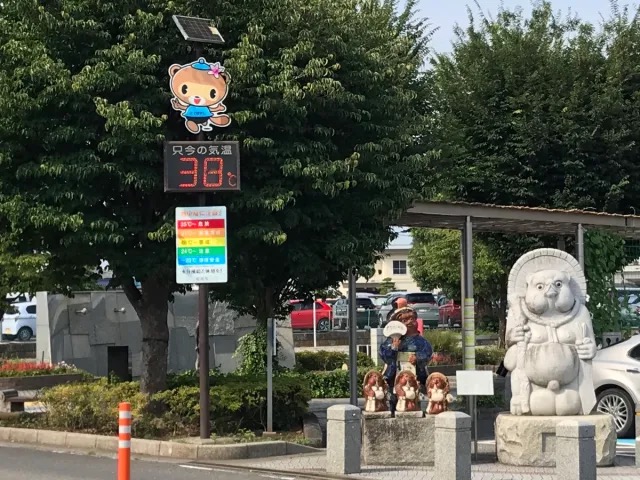
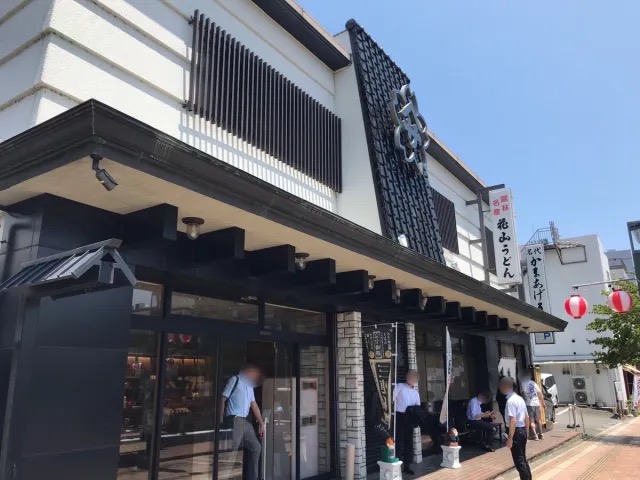
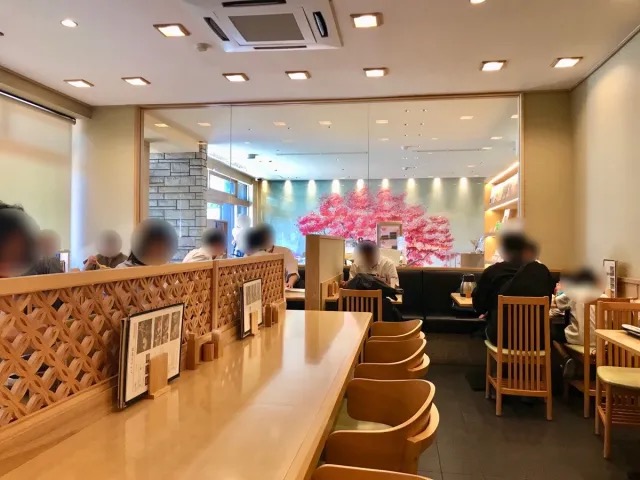
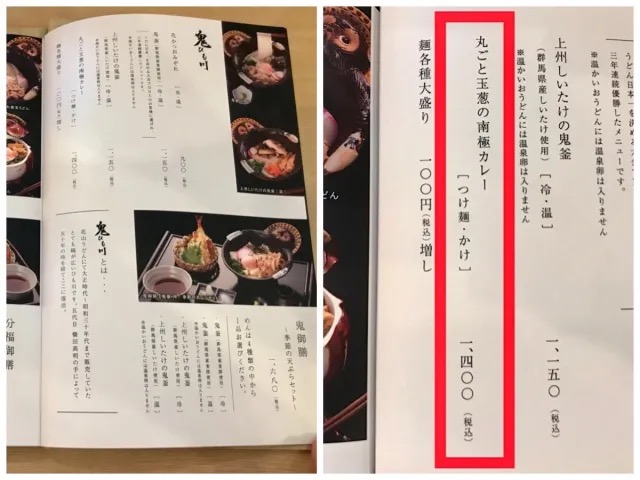
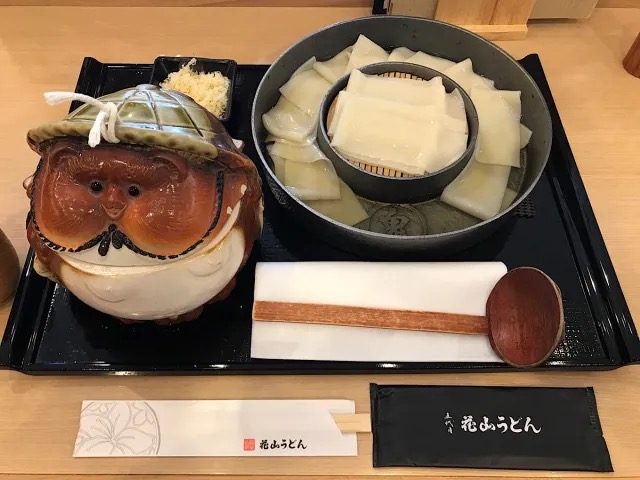
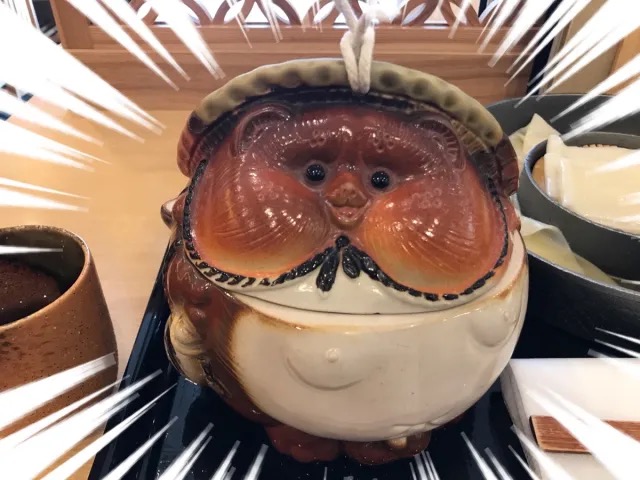
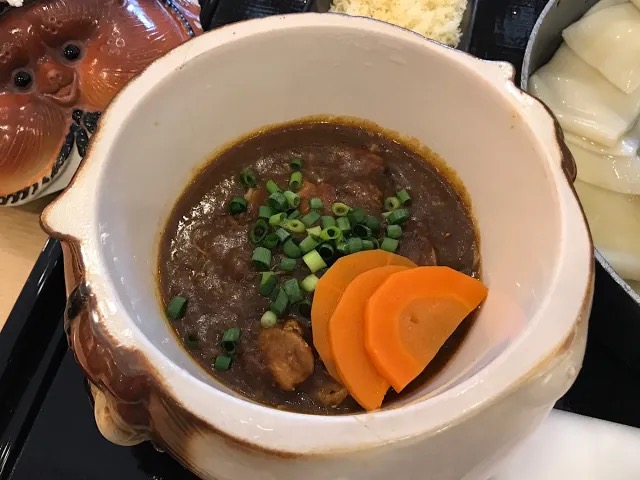
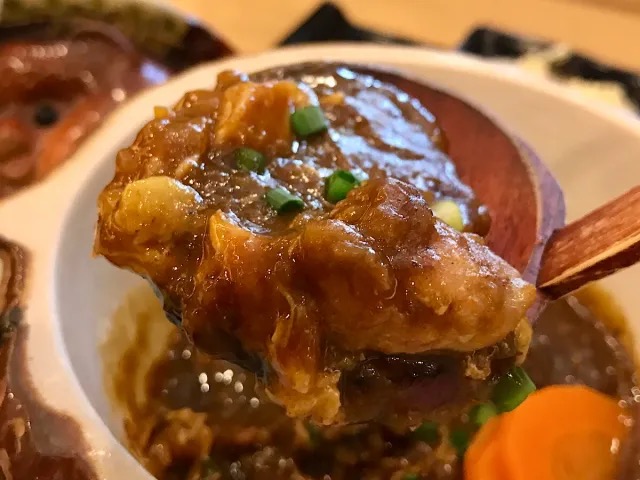
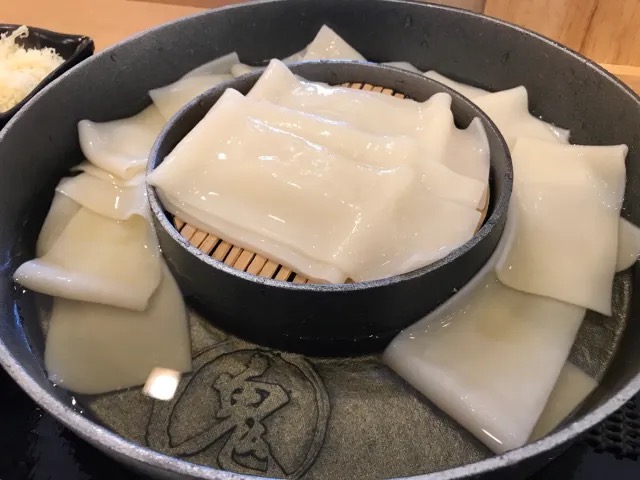
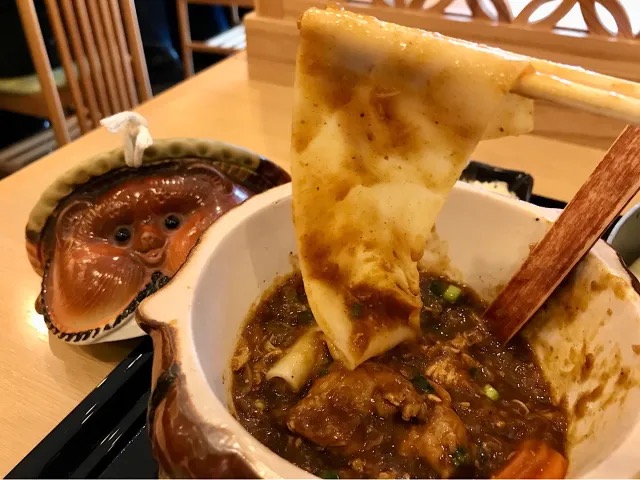
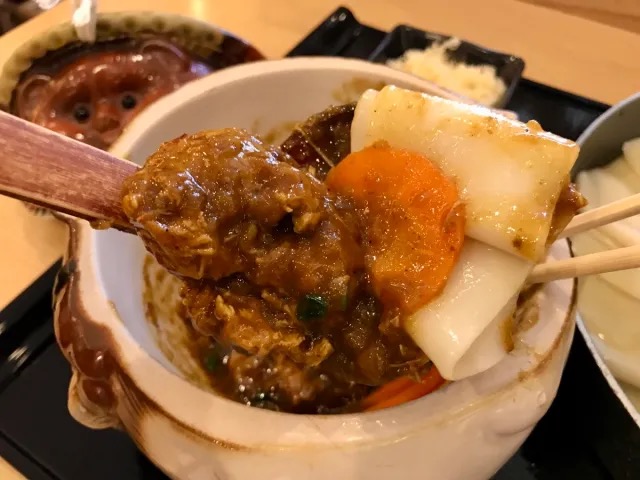
 We visited Japan’s number one udon store in Gunma Prefecture
We visited Japan’s number one udon store in Gunma Prefecture Gunma’s yaki manju, unknown to most Japanese people, are the best manju we’ve ever had
Gunma’s yaki manju, unknown to most Japanese people, are the best manju we’ve ever had How to make an epic pizza at a Japanese family restaurant
How to make an epic pizza at a Japanese family restaurant New Japanese sweets store sells drinkable red bean paste
New Japanese sweets store sells drinkable red bean paste Japanese balloon jellies, or “Tengu’s Treasure”, are a very unique souvenir
Japanese balloon jellies, or “Tengu’s Treasure”, are a very unique souvenir Foreigner’s request for help in Tokyo makes us sad for the state of society
Foreigner’s request for help in Tokyo makes us sad for the state of society Japanese-style accommodation at the new Premium Dormy Inn hotel in Asakusa will blow your mind
Japanese-style accommodation at the new Premium Dormy Inn hotel in Asakusa will blow your mind Seaside scenery, history, and so many desserts on Yokohama’s Akai Kutsu【Japan Loop Buses】
Seaside scenery, history, and so many desserts on Yokohama’s Akai Kutsu【Japan Loop Buses】 Mikado Coffee is a 76-year-old coffee chain with a major celebrity connection
Mikado Coffee is a 76-year-old coffee chain with a major celebrity connection Japanese city loses residents’ personal data, which was on paper being transported on a windy day
Japanese city loses residents’ personal data, which was on paper being transported on a windy day Japan’s summertime towelket pillowcases are even better with the addition of Ghibli stars【Photos】
Japan’s summertime towelket pillowcases are even better with the addition of Ghibli stars【Photos】 The results are in! One Piece World Top 100 characters chosen in global poll
The results are in! One Piece World Top 100 characters chosen in global poll Japan’s first-ever capybara cat cafe opens in Tokyo
Japan’s first-ever capybara cat cafe opens in Tokyo Former employee shows us why a Starbucks “Tall Latte” is a sucker bet
Former employee shows us why a Starbucks “Tall Latte” is a sucker bet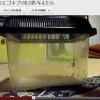 Cockroach-Killer Spider (aka Fighting Nope with More Nope)
Cockroach-Killer Spider (aka Fighting Nope with More Nope) McDonald’s new Happy Meals offer up cute and practical Sanrio lifestyle goods
McDonald’s new Happy Meals offer up cute and practical Sanrio lifestyle goods Japanese ramen restaurants under pressure from new yen banknotes
Japanese ramen restaurants under pressure from new yen banknotes French Fries Bread in Tokyo’s Shibuya becomes a hit on social media
French Fries Bread in Tokyo’s Shibuya becomes a hit on social media Red light district sushi restaurant in Tokyo shows us just how wrong we were about it
Red light district sushi restaurant in Tokyo shows us just how wrong we were about it New private rooms on Tokaido Shinkansen change the way we travel from Tokyo to Kyoto
New private rooms on Tokaido Shinkansen change the way we travel from Tokyo to Kyoto Tokyo Tsukiji fish market site to be redeveloped with 50,000-seat stadium, hotel, shopping center
Tokyo Tsukiji fish market site to be redeveloped with 50,000-seat stadium, hotel, shopping center Beautiful Ghibli sealing wax kits let you create accessories and elegant letter decorations【Pics】
Beautiful Ghibli sealing wax kits let you create accessories and elegant letter decorations【Pics】 Secret Kitchen bento serves Japanese flowers, birds, wind and moon in a box, but is it worth it?
Secret Kitchen bento serves Japanese flowers, birds, wind and moon in a box, but is it worth it? New definition of “Japanese whiskey” goes into effect to prevent fakes from fooling overseas buyers
New definition of “Japanese whiskey” goes into effect to prevent fakes from fooling overseas buyers Our Japanese reporter visits Costco in the U.S., finds super American and very Japanese things
Our Japanese reporter visits Costco in the U.S., finds super American and very Japanese things Studio Ghibli releases Kiki’s Delivery Service chocolate cake pouches in Japan
Studio Ghibli releases Kiki’s Delivery Service chocolate cake pouches in Japan All-you-can-drink Starbucks and amazing views part of Tokyo’s new 170 meter-high sky lounge
All-you-can-drink Starbucks and amazing views part of Tokyo’s new 170 meter-high sky lounge More foreign tourists than ever before in history visited Japan last month
More foreign tourists than ever before in history visited Japan last month New Pokémon cakes let you eat your way through Pikachu and all the Eevee evolutions
New Pokémon cakes let you eat your way through Pikachu and all the Eevee evolutions Disney princesses get official manga makeovers for Manga Princess Cafe opening in Tokyo
Disney princesses get official manga makeovers for Manga Princess Cafe opening in Tokyo Sales of Japan’s most convenient train ticket/shopping payment cards suspended indefinitely
Sales of Japan’s most convenient train ticket/shopping payment cards suspended indefinitely Sold-out Studio Ghibli desktop humidifiers are back so Totoro can help you through the dry season
Sold-out Studio Ghibli desktop humidifiers are back so Totoro can help you through the dry season Japanese government to make first change to romanization spelling rules since the 1950s
Japanese government to make first change to romanization spelling rules since the 1950s Ghibli founders Toshio Suzuki and Hayao Miyazaki contribute to Japanese whisky Totoro label design
Ghibli founders Toshio Suzuki and Hayao Miyazaki contribute to Japanese whisky Totoro label design Doraemon found buried at sea as scene from 1993 anime becomes real life【Photos】
Doraemon found buried at sea as scene from 1993 anime becomes real life【Photos】 Tokyo’s most famous Starbucks is closed
Tokyo’s most famous Starbucks is closed One Piece characters’ nationalities revealed, but fans have mixed opinions
One Piece characters’ nationalities revealed, but fans have mixed opinions We asked a Uniqlo employee what four things we should buy and their suggestions didn’t disappoint
We asked a Uniqlo employee what four things we should buy and their suggestions didn’t disappoint Popcorn shrimp udon, as in noodles with popcorn and shrimp, now on the menu in Tokyo【Taste test】
Popcorn shrimp udon, as in noodles with popcorn and shrimp, now on the menu in Tokyo【Taste test】 We try a Tokyo luxury hotel’s fancy Cup Noodle buffet items, eat best curry noodles of our lives
We try a Tokyo luxury hotel’s fancy Cup Noodle buffet items, eat best curry noodles of our lives Survey ranks the most popular Japanese curry dishes during winter
Survey ranks the most popular Japanese curry dishes during winter Panju: A Rare Japanese sweet you can buy from a food cart for less than 30 cents
Panju: A Rare Japanese sweet you can buy from a food cart for less than 30 cents Pitch-black Black Belt udon noodles are a visual roundhouse, but do they taste good?【Taste test】
Pitch-black Black Belt udon noodles are a visual roundhouse, but do they taste good?【Taste test】 Why hayashi rice should be your last meal before leaving Japan
Why hayashi rice should be your last meal before leaving Japan Tokyo cafe serves up the artsiest version of a drinkable roasted sweet potato that we’ve seen yet
Tokyo cafe serves up the artsiest version of a drinkable roasted sweet potato that we’ve seen yet Starbucks Japan’s Lucky Bag #3: A fukubukuro to end all fukubukuro
Starbucks Japan’s Lucky Bag #3: A fukubukuro to end all fukubukuro Vending machine noodle ice cream: A retro icon in Japan brings joy to a new generation
Vending machine noodle ice cream: A retro icon in Japan brings joy to a new generation Tokyo’s Curry Udon Croquette Burger is four of Japan’s favorite foods in one【Taste test】
Tokyo’s Curry Udon Croquette Burger is four of Japan’s favorite foods in one【Taste test】 Noodle joint in Harajuku becomes a hot topic with foreigners on Reddit, but is it any good?
Noodle joint in Harajuku becomes a hot topic with foreigners on Reddit, but is it any good? All-Noodle Artisan Marugame udon restaurant operating in Tokyo, only 30 percent pass test
All-Noodle Artisan Marugame udon restaurant operating in Tokyo, only 30 percent pass test Japanese stir-fried noodles a huge hit in Kenya
Japanese stir-fried noodles a huge hit in Kenya Tokyo restaurant’s all-you-can-eat curry, udon is under five bucks, comes with free fried chicken
Tokyo restaurant’s all-you-can-eat curry, udon is under five bucks, comes with free fried chicken We tried the expensive but delicious curry at Ishikawa’s Go! Go! Curry! But is it worth the trip?
We tried the expensive but delicious curry at Ishikawa’s Go! Go! Curry! But is it worth the trip?
Leave a Reply